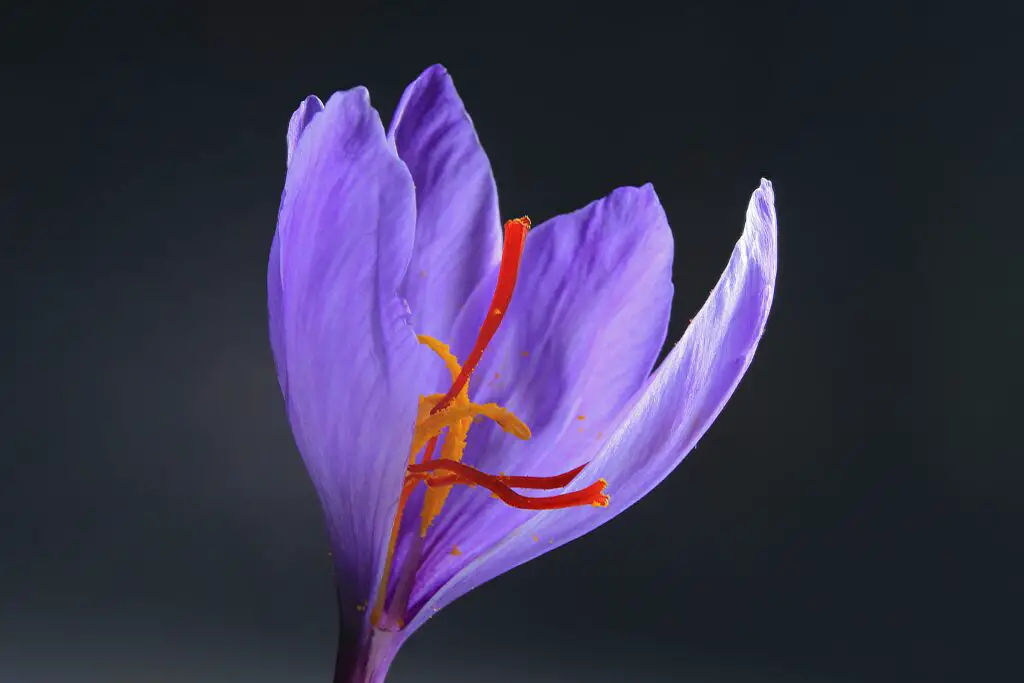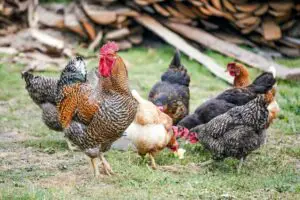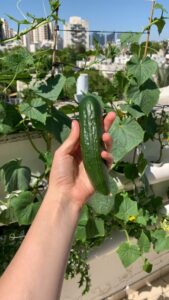I won’t forget the first time I tasted Saffron. It was in Spain and I just had my first Paella. The color of the rice and its taste were like nothing I have ever had. I asked what spices they used, they said saffron and I told my daughter we should get some and make it at home. When we went to the store I saw the price, explored a bit more about saffron, and tried to grow it myself.
Is growing your own saffron worth it?
Absolutely! But before I share my excitement, I have to tell you that growing your own saffron is for adventurous growers. It took me a decent time before I dared to do so, and a few failures. But the day my daughter called me to tell me there are saffron flowers blossoming in our own garden (well hydro garden) was one of the best days I had in Spain.
Saffron spice comes from saffron threads and is the most expensive spice in the world. It’s highly prized that has been used for centuries in cooking and medicine. It comes from the stigmas of a type of crocus flower (saffron crocus) and can be grown either in traditional gardens or in more advanced hydroponic systems.
Whether you are an experienced grower or just getting started, there are several key steps to successfully grow saffron hydroponically. These include selecting the right bulb, choosing a suitable growing medium, and providing the right amount of light, water, and nutrients to your plants. With proper care and attention, you can grow beautiful saffron flowers in your own home that will add flavor and color to your cooking. So if you are ready to grow your own saffron, follow these simple tips and get started today!
To grow saffron hydroponically, you will need:
Growing saffron hydroponically is a great way to create your own supply of this expensive spice. Hydroponic saffron requires very little space and can be set up indoors (growers in Kashmir do so)! All you need are some saffron bulbs, nutrient-rich water, and plenty of sunlight.
Sort list:
- Saffron bulbs (or seeds) from a reputable source
- Suitable growing medium (such as soil or hydroponics system)
- Lighting and irrigation systems for your plants
- Nutrients and fertilizers to promote healthy growth
- Containers or planters to hold your saffron plants
Detailed list:
- To start growing your saffron garden, begin by selecting a spot in your home that receives plenty of natural light. To grow saffron hydroponically, you will need to provide your plants with plenty of light. In general, full sun exposure is ideal, so placing your plants in a location that receives at least 6-8 hours of direct sunlight each day should be sufficient. Depending on the type and size of your hydroponic system, you may also want to consider using grow lights or other supplemental lighting sources to ensure that your plants get the necessary amount of light for optimal growth and development.
Buy Saffron bulbs: Choose high-quality seeds from a reputable source, and pay attention to any germination requirements or special growing instructions. First, you will need to select a quality saffron variety that is suited for growing hydroponically. Some good options include Sargol, Spanish Superior, or Poussier.
- 150 saffron flowers can produce around 1 gram (0.00220462 lb) of saffron spice, 50-60 flowers are enough for 1 tablespoon. so plant many saffron crocus bulbs or expect very little spice. The good news is that you can keep your bulb. A study by the University of Florida says that “Plants are propagated vegetatively by planting the young cormlets that form annually at the base of the bulblike mother corm. While the plants may live and bloom for 10–15 years, few plants are kept longer than 5 years commercially. In Italy saffron is cultivated as annual, mature corms being set every fall; they are uprooted and replanted every 3 years in France, after 4 years in Spain, and after 10–15 years in India”. You can view it right here.
- Choose a suitable growing medium: Whether you are using soil or a hydroponic system, make sure that your chosen medium is light, airy, and rich in nutrients.
- Water and nutrients: Be sure to regularly monitor the pH level of your water, as well as the levels of essential minerals like iron, magnesium, and potassium. You may also need to add additional fertilizers or plant food depending on your growing medium
- .Once you have set up your saffron hydroponic system and selected your seeds, simply water and care for your plants as needed. With the right conditions and a little bit of patience, you will soon be harvesting your own vibrant saffron flowers!
Provide your plants with plenty of light, water, and nutrients throughout the growth cycle to ensure optimal growth and development.
Best methods for growing saffron hydroponically
The most common methods for hydroponically grown saffron are hydroponic pin trays, deep water culture (DWC), and nutrient film technique (NFT).
What about aquaponics?
Aquaponics is another potential method for growing saffron and involves combining a hydroponic system with aquaculture to create an integrated agricultural system. This approach has been shown to be effective for certain types of plants, such as leafy greens and herbs, but may not be suitable for growing delicate saffron plants.
can growing vertical farming saffron work?
There is some debate about whether vertical farming is a viable method for growing saffron. While there are some benefits to this type of system, such as the ability to optimize space and reduce environmental impacts, there are also certain challenges that must be considered. For example, many vertical farms rely on artificial lighting and climate control systems that need to be carefully monitored and maintained. Additionally, vertical farming typically requires the use of hydroponic systems, which can be complicated and costly to set up and maintain.
Despite these challenges, there are some growers who have successfully used vertical farming methods to grow saffron successfully. If you are considering this approach for your own saffron crop, it is important to do your research and choose a system that has been proven to work under the specific conditions of your growing environment. With careful planning, attention to detail, and a commitment to ongoing maintenance and monitoring, it may be possible for you to grow flavorful saffron using vertical farming techniques.
How to plant the saffron bulb in a hydroponic system?
There are several methods for planting saffron bulbs in a hydroponic system, depending on the type of system that you are using. In general, the key is to provide your plants with the right amount of water, light, and nutrients while maintaining an optimal pH level and temperature. Some possible approaches include:
1. Place the crocus sativus bulbs directly in a hydroponic nutrient solution or misting system, which allows water to flow over and around the roots.
2. Using a planting tray or other container filled with an inert growing medium such as perlite or vermiculite, which provides support for the saffron bulb while allowing water and nutrients to pass through to the roots.
3. Plant your saffron bulb directly in an inert growing medium such as coco coir or rock wool, and then suspend it in a nutrient solution using support clips or other accessories.
No matter which method you choose, it is important to carefully monitor the moisture levels in your hydroponic system, making sure to adjust the amount of water or nutrients as needed. Additionally, you may want to consult with an experienced hydroponic grower or gardening expert for additional tips and advice on how to plant saffron bulbs in a hydroponic system successfully.
what is the best temperature and moisture level to grow saffron?
There is no one “best” temperature and moisture level for growing saffron, as conditions will vary depending on the type of hydroponic system that you are using. In general, however, it is important to keep your plants warm and well-watered, while ensuring adequate airflow and avoiding overly hot or humid conditions. Some tips for maintaining optimal temperature and moisture levels for saffron growth include:
-Providing adequate light and ventilation to promote healthy plant growth, while avoiding direct sunlight or overly warm conditions that can cause heat stress.
-Monitoring the moisture level in your hydroponic system regularly, adjusting the water flow as needed to ensure that plants do not become too dry or too wet.
-Adding nutrient supplements, such as seaweed or fish emulsion, to promote healthy growth and discourage pests or diseases.
-Consult with an experienced hydroponic grower or gardening expert for additional tips and advice on the best temperature and moisture levels for growing saffron in your particular system.
What pH should the water have for the saffron to grow hydroponically?
Most experts recommend maintaining a slightly acidic pH range of 5.5 to 6.5 for optimal growth and development. To achieve this, you may want to consider adding a pH-adjusting agent such as vinegar, lemon juice, or baking soda to your water before adding it to your hydroponic system. Additionally, you may want to regularly monitor the pH level of the nutrient solution in your system, adjusting it as necessary to maintain optimal growth conditions for your saffron plants.

Time: plant and harvest
what is the best time to plant saffron?
I recommend planting saffron in late fall or early winter, September or October, for colder climates, as this allows the bulbs to grow and mature over the winter months before they are harvested in the spring.
when should I harvest the saffron?
The ideal time to harvest saffron is when the flowers have fully bloomed and begun to die back, typically between mid-October and mid-November. To do so, gently remove the red stigmas from the flower using a sharp pair of scissors or pruners, taking care not to damage any surrounding bracts or yellow stigmas. After harvesting, you may want to hang or lay the saffron stigmas out to dry (possibly on a paper towel) in a cool, dark location for several days before storing them in an airtight container until ready to use.
How to avoid a flower drop?
There are a number of factors that may cause a flower drop in your saffron plants, including fluctuating temperatures and moisture levels, poor lighting conditions, or plant pests and diseases. To help prevent these issues from affecting your flowers and causing them to drop prematurely, it is important to regularly monitor the temperature, humidity levels, and nutrient supply in your hydroponic system, and make any necessary adjustments as needed. Additionally, you may want to regularly inspect your plants for signs of pests or disease, and take prompt action to treat the issue if one is detected. Finally, some general tips for promoting healthy flower growth in saffron plants include providing adequate light, space, and airflow within your hydroponic system, using high-quality nutrients and supplements, and ensuring that your plant is getting adequate water and nutrition throughout the growing season. With careful attention to these fundamentals, you can help ensure healthy flower development in your saffron crops, and enjoy a bountiful harvest year after year!
Conclusion
Growing and harvesting saffron is great satisfaction and saffron grown hydroponically is one of the biggest challenges for every hydroponic gardener.
If you are interested in growing saffron hydroponically, it is important to develop a strong understanding of the key factors that influence plant growth, such as temperature and moisture levels, light exposure, nutrient supply, and pest and disease management. By carefully monitoring these conditions within your hydroponic system and making any necessary adjustments as needed, you can help ensure healthy flower development and a bountiful harvest of this prized spice. Good luck!





